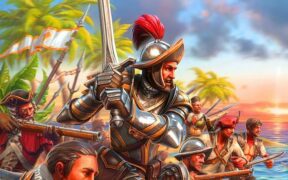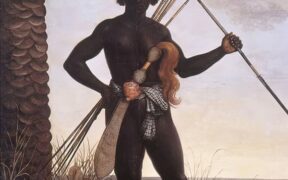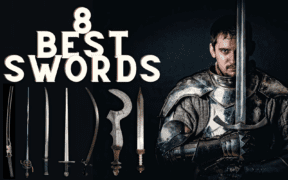The Conquistador Swords that Conquered the Americas
NO AI USED This Article has been written and edited by our team with no help of the AI
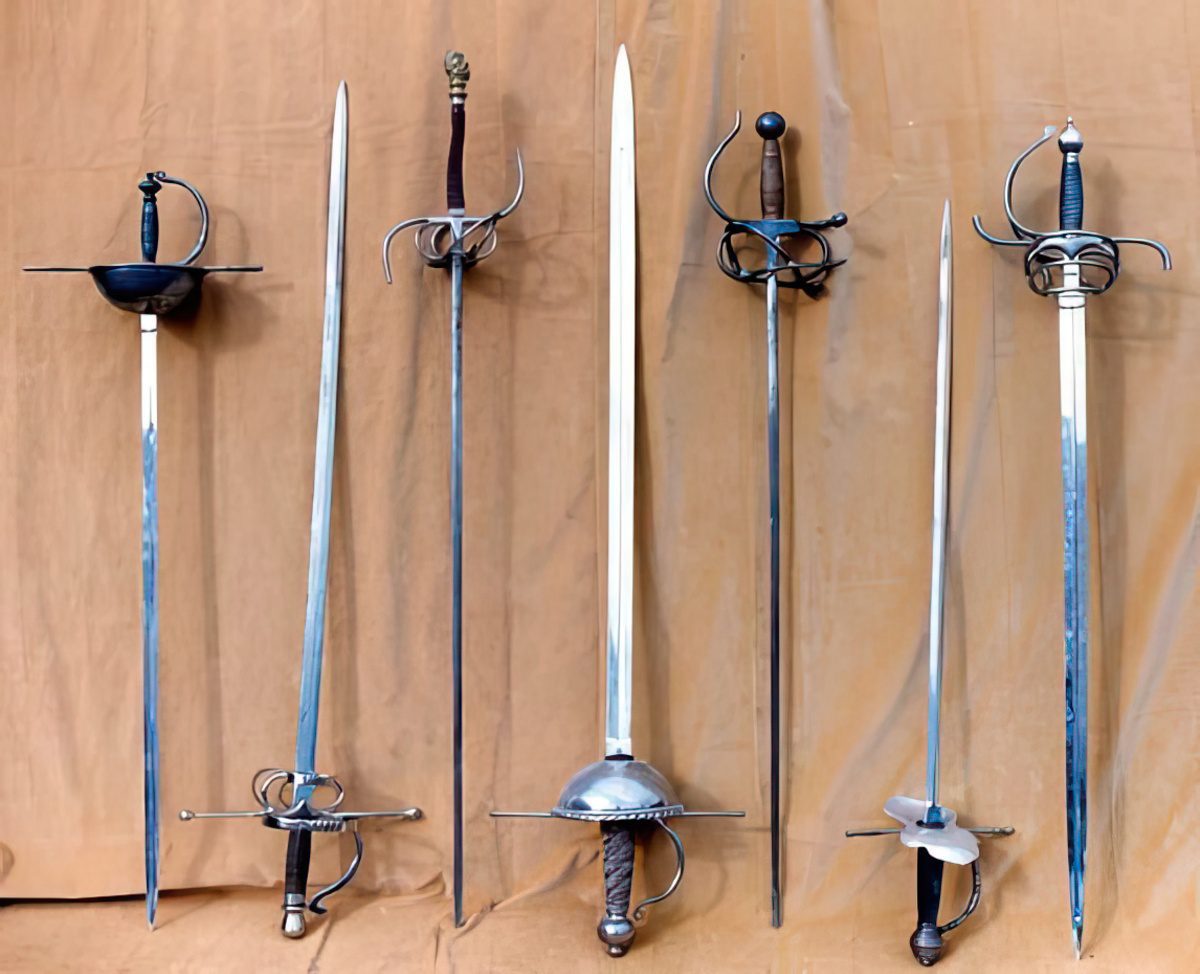
After Christopher Columbus’ discovery of the American continents, Spanish conquistadors were able to conquer the New World in part because of their superior weapons. While cannons and guns aided the European conquest, these supplies were limited. Thus, Spain held the advantage in hand-to-hand combat because of their steel swords.
This article will take a look at the swords of the conquistadors, where they came from, how they were used, and why they were superior to anything the indigenous peoples of the Americas had at the time.
Popular Conquistador Sword Types
The Spanish and Portuguese used many different types of swords in their 16th-century invasion of the American continents. What follows is an overview of the different types of swords that conquistadors used in their wars against the Aztecs and the Inca.
Rapier (Espada Ropera)
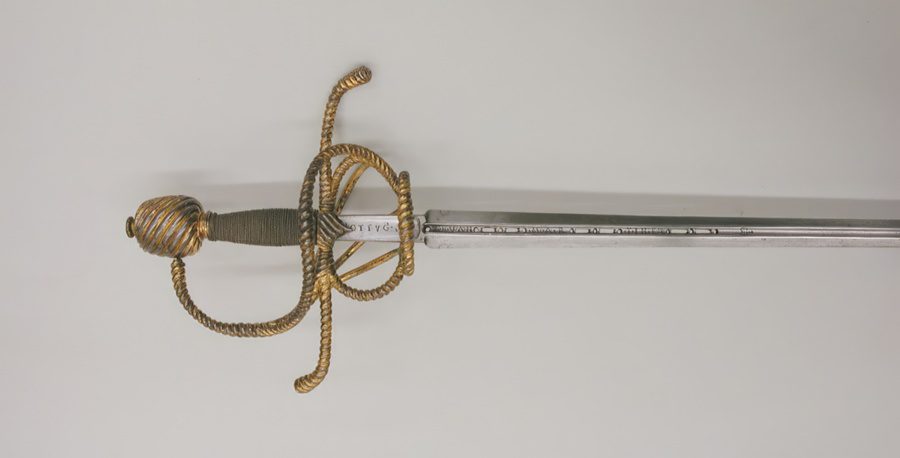
The Spanish rapier, also known as the “dress sword,” was the favorite weapon of 16th and 17th century conquistadors because of its superiority on the battlefield and its representation of status and wealth among the nobility. The steel blade was wickedly effective at penetrating native armor through cutting and thrusting attacks.
The rapier is known for having an extremely thin, narrow, and flexible blade. The single-handed hilts and pommels were elaborately decorated, indicating the status of the individual wielding it. Sheathed in an ornate scabbard, the espada ropera was standard uniform for the highest ranking officers, making it the primary sword of the most famous conquistadors.
Fun Fact: The Three Musketeers used Spanish Rapiers forged from Toledo.
Falchion
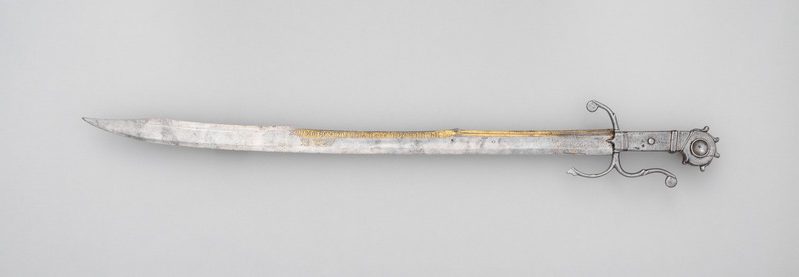
Featuring a curved, single-edged blade that widens towards the point, the falchion was an effective weapon for slashing, cutting, and thrusting in close quarters. Having been influenced by the design of Moorish swords, the Spanish falchion was a favorite among the deadly Spanish cavalry for its slashing prowess. It was also useful in close quarter infantry combat because it was easily wielded and its smaller size.
The length of the falchion’s blade typically averaged between 28-35 inches featuring a simple crossguard with straight quillons to protect the hand. The hilt was one-handed and straight with a rounded pommel to act as a counterbalance. Typically sheathed in a leather scabbard, Falchions could feature ornate decorations to demonstrate wealth and status.
Did you know? From around 700-1492 CE, Spain was occupied by the Moors. After the Holy Wars, Christian Crusaders returned to the Iberian peninsula determined to win back Spain and Portugal. King Ferdinand and Queen Isabella finally drove the Moors completely out of Spain during the Reconquista in the same year they sent Christopher Columbus on his voyage that discovered the New World in 1492. This is why Muslim curved swords influenced the design of some Spanish swords like the falchion.
Longsword (Espada Bastarda)
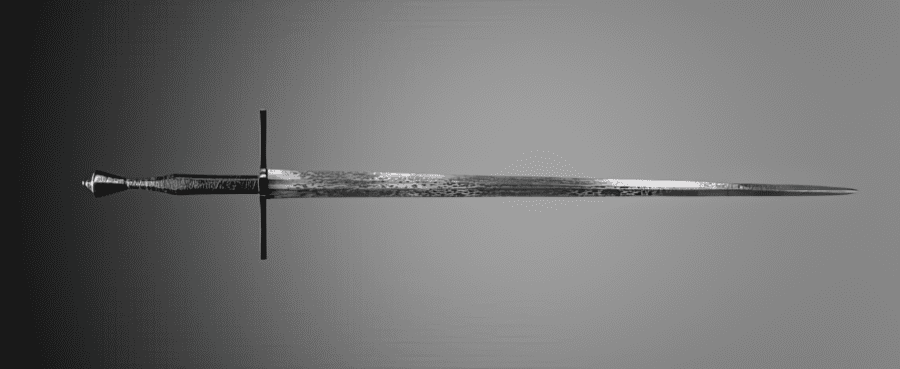
A Spanish longsword, the straight, double-edged blade of the “Espada Bastarda” ranged between 40-48 inches with a tapered point, making it extremely versatile for either slashing or thrusting attacks. The crossguard was a simple cruciform while the hilt could accommodate one or two hands, giving it the Spanish nickname of “Espada de mano y media” (the hand-and-a-half sword.)
This sword’s reach, cutting, and thrusting capabilities made it a favorite among conquistador weapons. The strength of the steel longsword easily penetrated Native American armor, and the conquistadors used this superiority in technology to sweep across Central and South America.
Arming Sword (Espada de Armas)
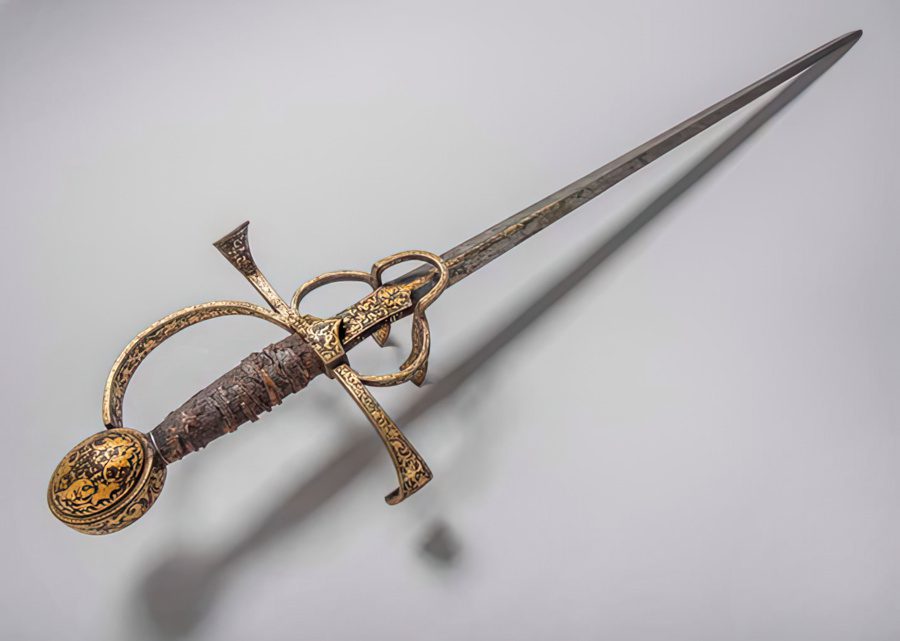
With a shorter blade of 28-34 inches, the arming sword was double-edged, straight, and able to cut and thrust. The hilt was straight and accommodated a single hand with a simple pommel design. The sword was designed to be well-balanced, allowing for precise control when attacking and defending.
The Spanish conquerors favored the espada de armas because it was versatile and easy to use. Soldiers were also familiar with this weapon because they had used it in their wars against the Moors back in Spain.
Greatsword (Montante)
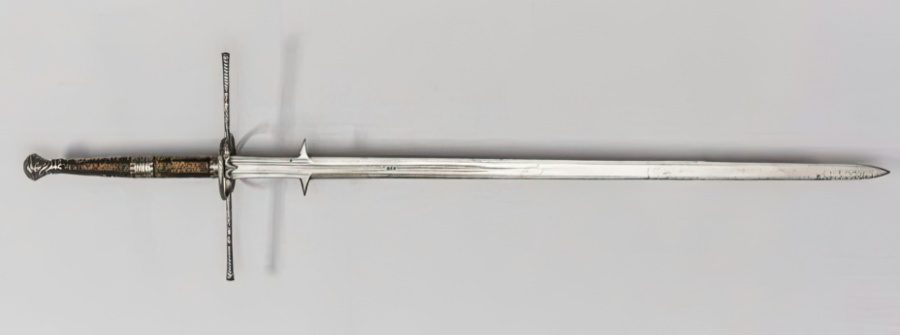
Spanish conquistadors also used a greatsword in their campaigns against indigenous Americans. The Montante was two-handed with a blade measuring about 60 inches and weighing in at about six pounds.
The Spanish greatsword was used by infantry to inflict crushing blows from a distance. Because the Native Americans had never seen weapons like this, they had no strategy against it, and the use of the Montante resulted in a devastating effect on the battlefield.
Swords of Famous Conquistadors
In Central America, Hernan Cortes defeated the mighty Aztecs. In South America, Francisco Pizarro, along with Diego de Almagro, conquered the Inca empire. This next section investigates what swords these most famous conquistadors carried and what weapons they preferred as they brutally expanded the Spanish empire.
Hernan Cortes
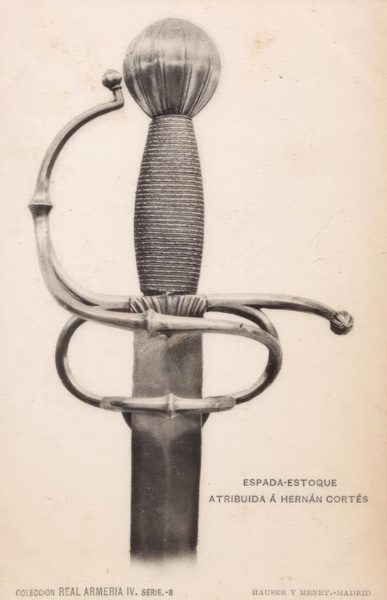
The Royal Armory in Madrid, Spain claims to house Cortes’ rapier. The Spaniard would have used this rapier on his reign of terror through Tenochtitlan. Interestingly, though Toledo, Spain was so well-known for their steel-making prowess, this sword may have come from the equally proficient German steel-makers of Solingen. This is speculated because of the “wolf mark” present on the sword.
That a Spanish conquistador wouldn’t be using a Spanish sword is strange, but, regardless, this sword was potentially wielded by the top general in one of the most important wars in history.
Francisco Pizarro
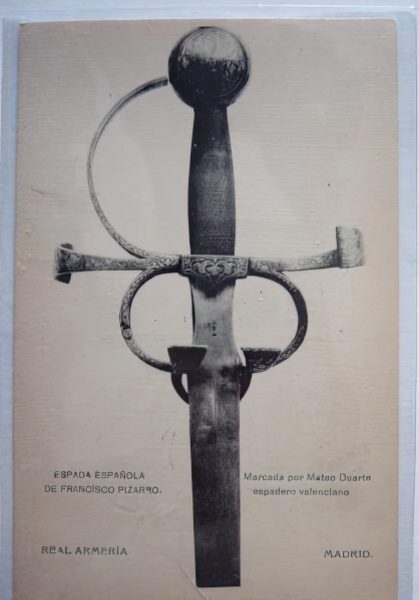
Pizarro also wielded a rapier as he trekked through the Andes of Peru. Also housed in the Royal Armory of Madrid, Pizarro’s sword is elegant, representing a high point in European sword-making technology.
The same rapier Pizarro used to conquer the Inca may have been used against a group of assassins in the hour of his death. When a group of lesser conquistadors showed up at his palace door, angry that they had been denied the wealth from the conquest, Pizarro fought back before having his throat crushed.
Interestingly, Pizarro’s sword reappears in history when Sir John Downie borrowed it from one of Pizarro’s descendents to use it in the Peninsular War in which the British, Spanish, and Portuguese drove out Napoleon’s invading forces.
Toledo Steel
What made the Spanish swords so great? What gave Cortes and Pizarro such an advantage in hand-to-hand combat? The answer is Toledo Steel. Toledo, Spain has had a history of metal-working since the bronze age and was therefore, an important source of swords for the Roman Empire under Hannibal.
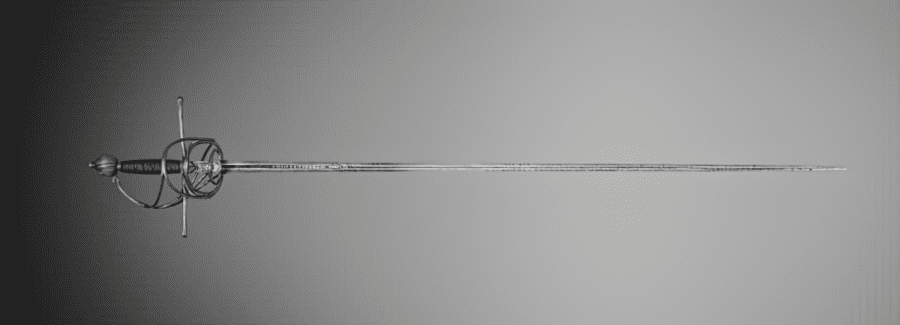
Through the Middle Ages, Toledo continued to make the best steel. Others tried to emulate their process, but the swords were either too soft or too brittle. While the Muslims occupied the Iberian peninsula, they used Toledo steel to fashion their scimitars, but after the Reconquista, Toledo steel was most effective in producing viscous rapiers.
Toledo steel is excellent because of the uniquely skilled artisans and smiths, having acquired special knowledge from their ancestors generations over. The waters of the Tagus river and how they are used to temper the blades also contribute to the steel’s strength and flexibility. The swords contain “a soul of iron,” meaning a wrought iron strip is concealed within a steel case, contributing to its durability.
When Toledo steel showed up in Japan, locals were amazed at this steel’s strength. They even sent people back to Spain to have their katana and wakizashi forged, attesting to the superiority of this steel.
A huge reason why such relatively small Spanish forces were able to successfully invade and control the Americas was because of the steel-making tradition in their homeland.
